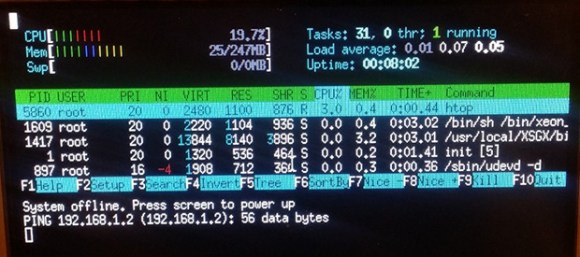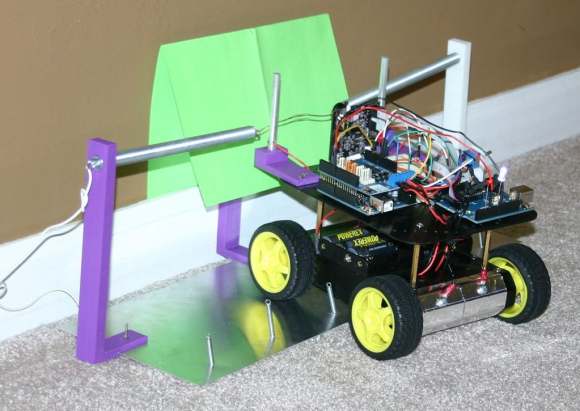
At home, [Daniel] has an extremely powerful dual quad-core Xeon system with ECC RAM that he uses for heavy lifting tasks – compiling, CUDA processing, and actual computing. Of course the electric bill for running this box all the time would be crazy, so Wake on LAN it is. There’s only one problem: for some reason, the BIOS doesn’t have Wake on LAN. The solution, of course, was a microcontroller system that would listen for the magic WoL packet and turn the computer on when it was received. This project eventually turned into a great case mod with an integrated LCD that powers the computer up over Ethernet, shows the current running processes, CPU and memory usage, and is an excellent use of a TI dev board.
The dev board in question is a TI Sitara AM355x starter kit that runs Linux, has two Ethernet ports and a touch sensitive LCD, and more than enough power to handle something as simple as a system monitor. To power on his monster computer from the dev board, [Daniel] is using a LED on the board, an inverter, a ULN2003 driver chip, and a relay connected to the computer’s power button. It’s not exactly a masterpiece of craftsmanship, but the dev board looks good mounted in the case, and from the videos below, it’s a great way to get system information embedded right into a computer case.














